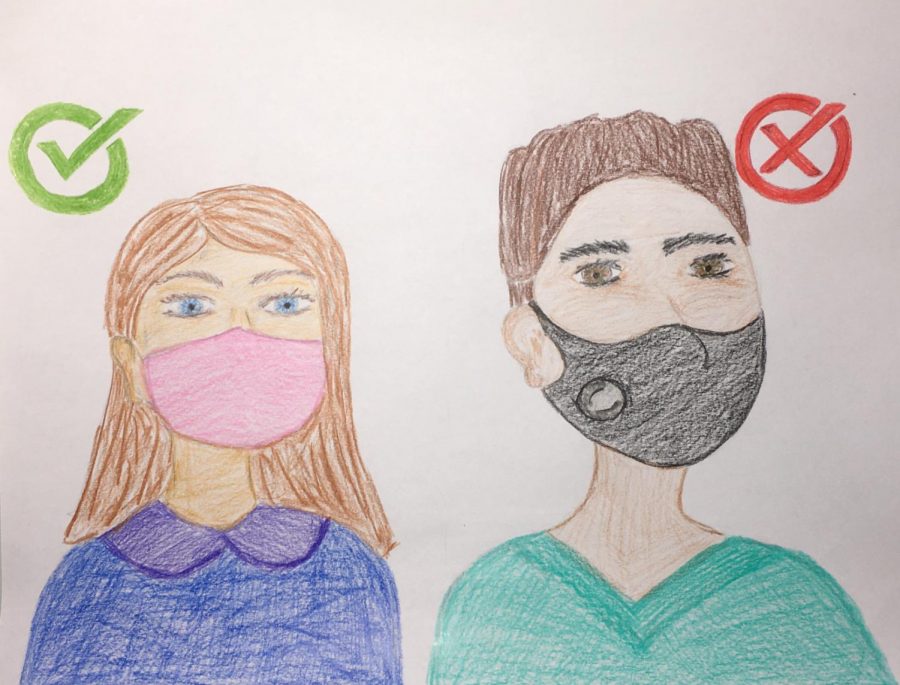Belief: Masks with valves are effective in helping reduce the spread of COVID-19.
Reality: Because masks with valves release unfiltered air, which may contain viral droplets, they are not effective in reducing the spread of COVID-19.
The Centers for Disease Control and Prevention (CDC) urge that the public wear cloth face masks to protect themselves and others from contracting COVID-19. When choosing the right face covering, the CDC advises against masks with an exhalation valve or vent.
“Masks with one-way valves or vents allow air to be exhaled through a hole in the material, which can result in expelled respiratory droplets that can reach others. This type of mask does not prevent the person wearing the mask from transmitting COVID-19 to others,” according to the CDC.
According to the Mayo Clinic, masks with valves allow unfiltered air to be released when the wearer exhales. The released air may contain viral droplets, which can infect others.
A valved mask filters the air that comes in, protecting the wearer. But, the face covering does not protect others if the wearer is infected–even if they do not have symptoms of COVID-19. Studies have shown that people without COVID-19 symptoms, or those who have not yet developed symptoms, can still be infected and spread the virus to others.
The current masking guidelines for San Mateo County, outlined in the June 17 health order, do not recognize masks with valves as proper face coverings. According to Dr. Scot Morrow, the San Mateo County health officer, masks with one-way valves “permit droplet release from the mask, putting others nearby at risk.”












